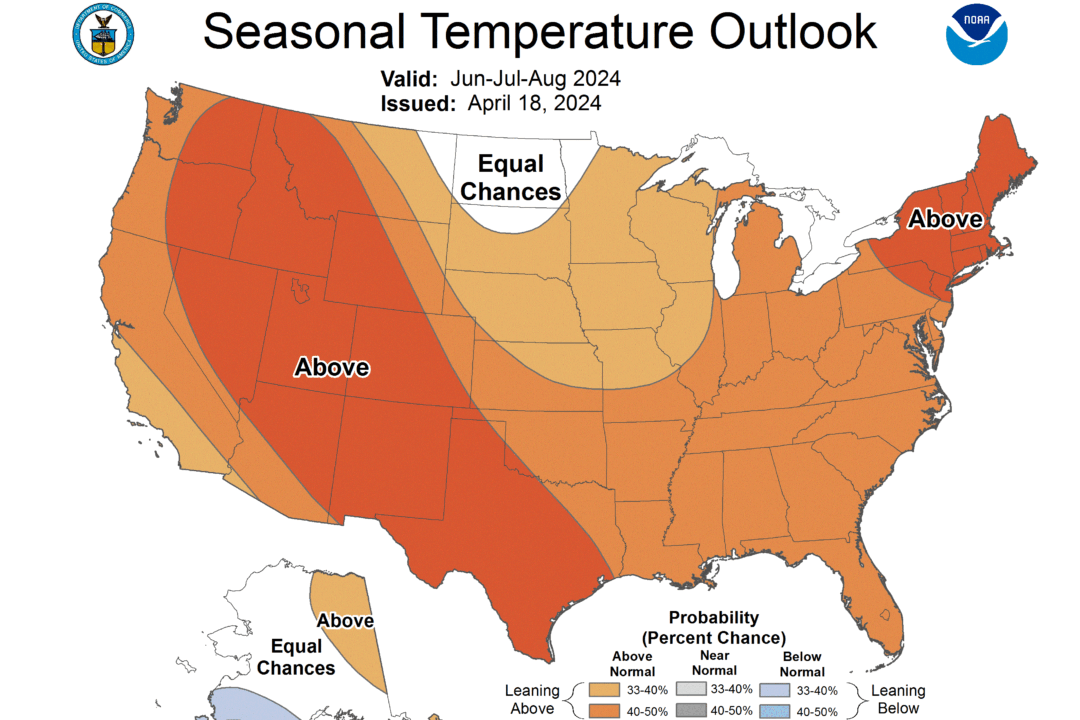An unusually hot summer has been predicted for most of the United States this year, according to weather forecasters. Warmer-than-average temperatures are expected from June through August. A summer forecast map released by the National Oceanic and Atmospheric Administration (NOAA) on April 18 shows most of the United States bathed in shades of red or orange.
According to NOAA, the Northeast and major parts of the West will likely bear the brunt of the heatwave, which, according to some forecasters, could be one of the hottest summers on record.




